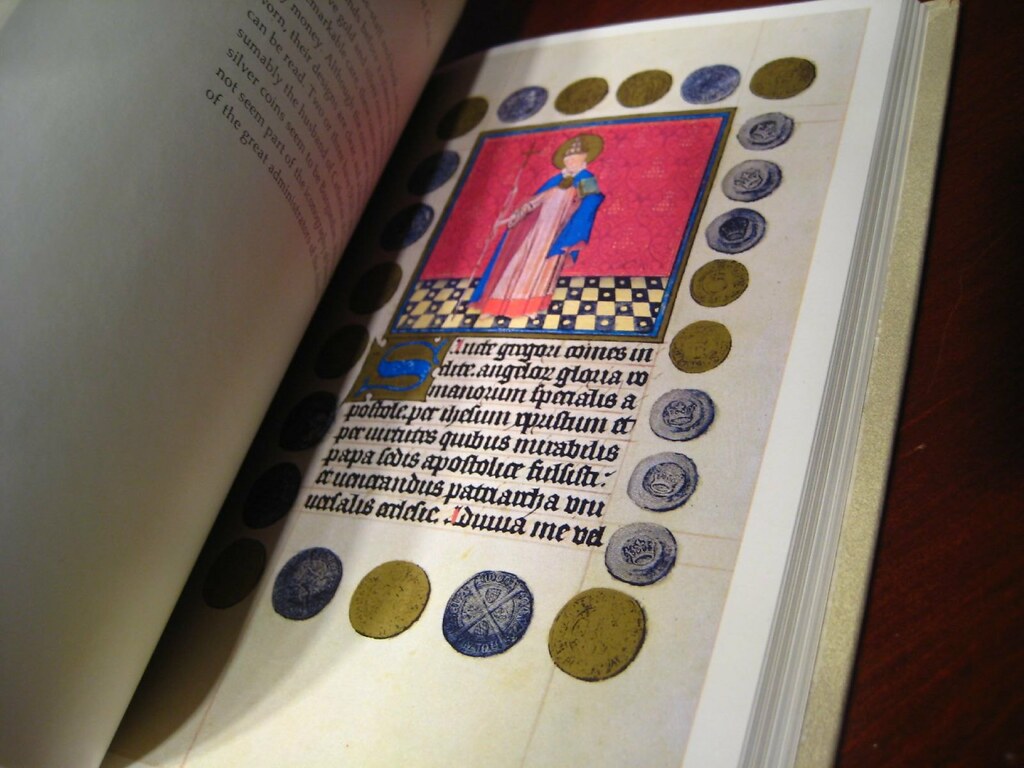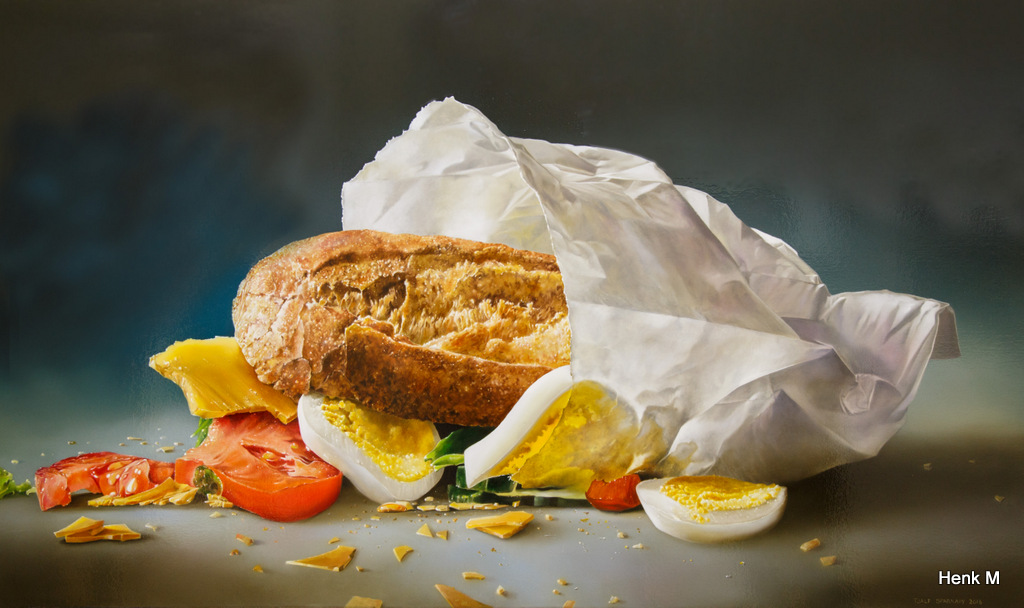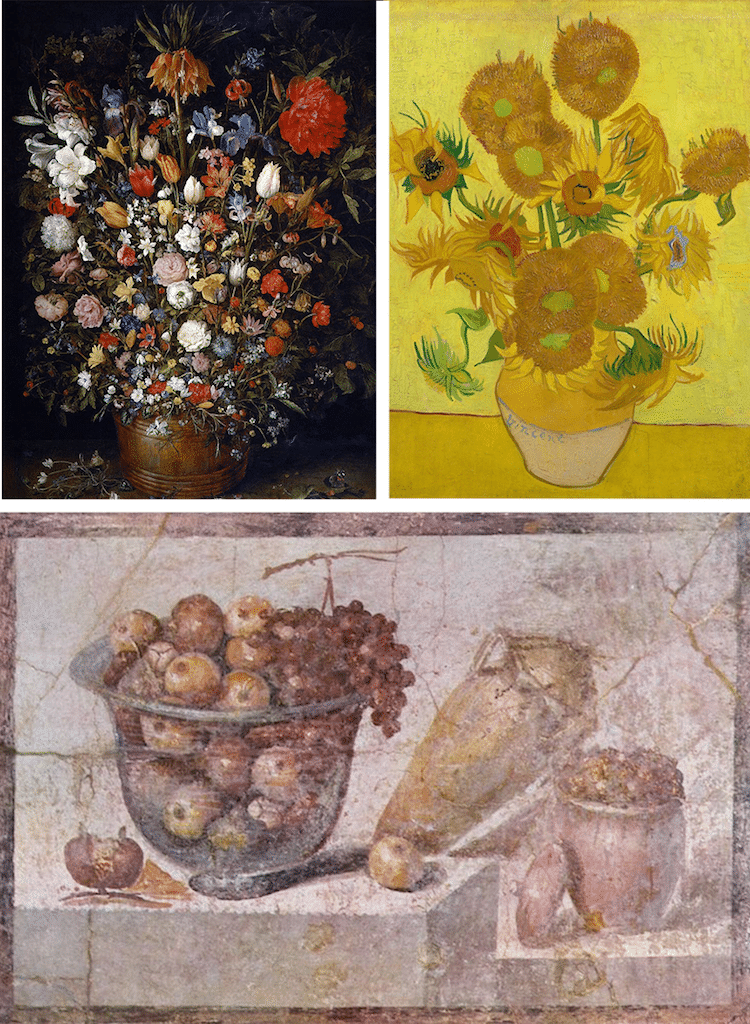
Édouard Manet once called still life “the touchstone of painting.” Characterized by an interest in the insentient, this genre of art has been popular across movements, cultures, and periods, with major figures like Paul Cézanne and Pablo Picasso sharing the Impressionist artist‘s view.
Here, we explore the age-old genre, tracing its history and looking at well-known works to answer the questions: what is still life painting, and how has it evolved over time?
What is a Still Life?
A still life (also known by its French title, nature morte) painting is a piece that features an arrangement of inanimate objects as its subject. Usually, these items are set on a table and often include organic objects like fruit and flowers and household items like glassware and textiles.
The term “still life” is derived from the Dutch word stilleven, which gained prominence during the 16th century. While it was during this time that the still life gained recognition as a genre, its roots date back to ancient times.
Types of Still Lifes
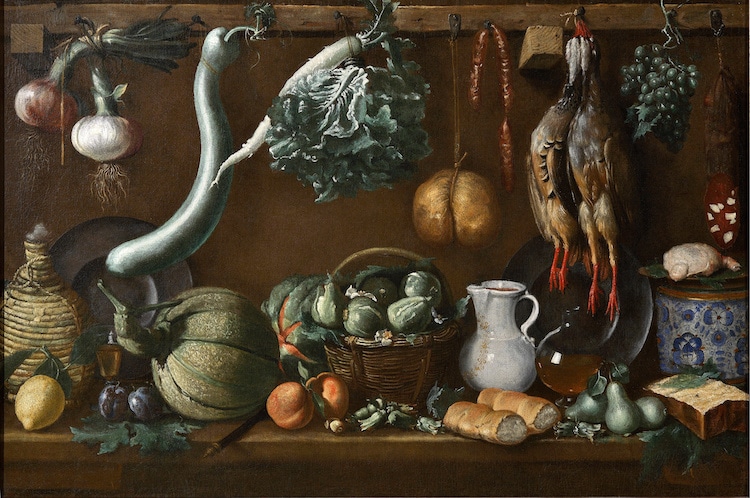
Jacopo da Empoli, “Still Life,” c. 1625 (Photo: Wikimedia Commons, Public domain)
Most still lifes can be placed into one of four categories: flowers, banquet or breakfast, animal(s), and symbolic. While most of these types are self-explanatory—flower pieces tend to focus on bouquets or vases of full blooms and a banquet work features an array of food items—symbolic still lifes can vary greatly.
In most cases, symbolic paintings use different objects to convey deeper meanings or narratives. This is best exemplified perhaps in vanitas painting: a genre of still life that focuses on the fleetingness of life.
History of Still Life Painting
Ancient Art
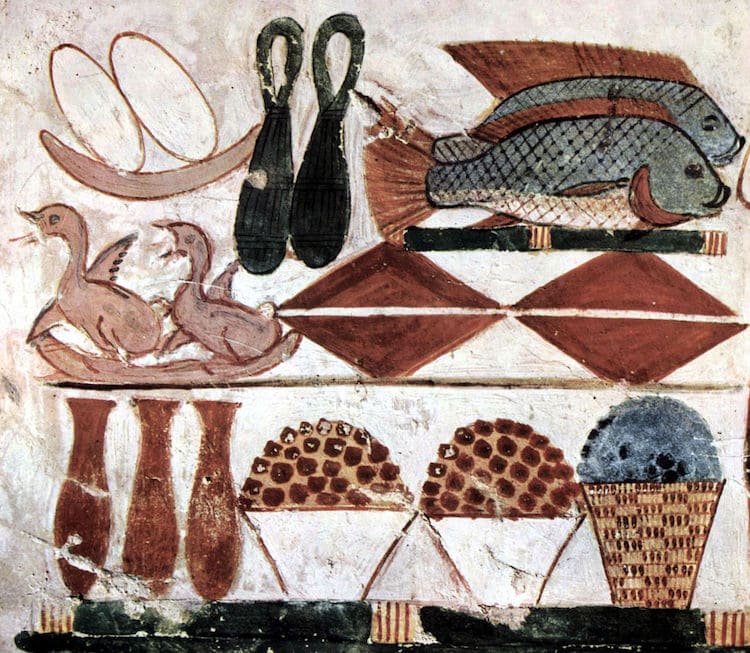
“Still-Life Found in the Tomb of Menna” (Photo: The Yorck Project via Wikimedia Commons, Public domain)
The earliest known still life paintings were created by the Egyptians in the 15th century BCE. Funerary paintings of food—including crops, fish, and meat—have been discovered in ancient burial sites. The most famous ancient Egyptian still-life was discovered in the Tomb of Menna, a site whose walls were adorned with exceptionally detailed scenes of everyday life.
Ancient Greeks and Romans also created similar depictions of inanimate objects. While they mostly reserved still-life subject matter for mosaics, they also employed it for frescoes, like Still Life with Glass Bowl of Fruit and Vases, a 1st-century wall painting from Pompeii.
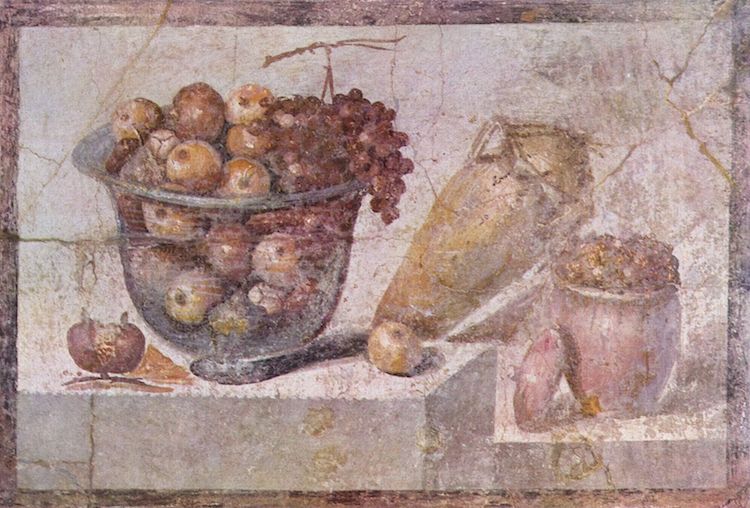
“Still Life with Glass Bowl of Fruit and Vases,” 63 – 79 CE (Photo: The Yorck Project via Wikimedia Commons, Public domain)
Middle Ages
During the Middle Ages, artists adapted the still life for religious purposes. In addition to incorporating symbolic arrangements into depictions of Biblical scenes, they also used them to decorate illuminated manuscripts. Objects like coins, seashells, and bushels of fruit can be found in the borders of these books, including the elaborately decorated Hours of Catherine of Cleves from the 15th century.
Renaissance

Jan Brueghel the Elder, “Flowers in a Wooden Vessel,” 1606 – 1607 (Photo: Google Art Project via Wikimedia Commons, Public domain)
Northern Renaissance artists popularized still life iconography with their flower paintings. These pieces typically showcase colorful flora “from different countries and even different continents in one vase and at one moment of blooming” (Metropolitan Museum of Art) and often do not feature other subject matter. These paintings rose to prominence in the early 17th century, when Northern Renaissance artists grew increasingly interested in creating realistic studies of everyday items.
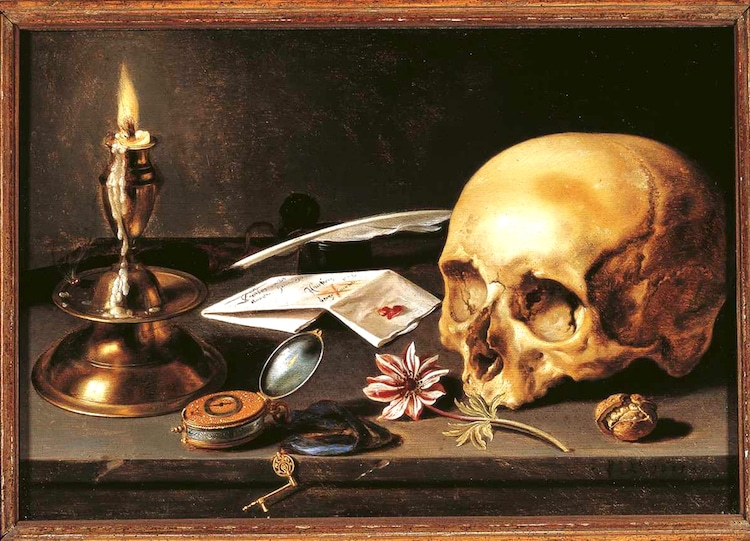
Pieter Claesz, “Vanitas – Still Life,” 1625 (Photo: Memory of the Netherlands via Wikimedia Commons, Public domain)
Dutch Golden Age artists took this interest in detailed floral art a step further with their vanitas paintings. Vanitas paintings are inspired by memento mori, a genre of painting whose Latin name translates to “remember that you have to die.” Like memento mori depictions, these pieces often pair cut flowers with objects like human skulls, waning candles, and overturned hourglasses to comment on the fleeting nature of life.
Unlike memento mori art, however, vanitas paintings “also include other symbols such as musical instruments, wine, and books to remind us explicitly of the vanity of worldly pleasures and goods” (Tate).
Modern Art
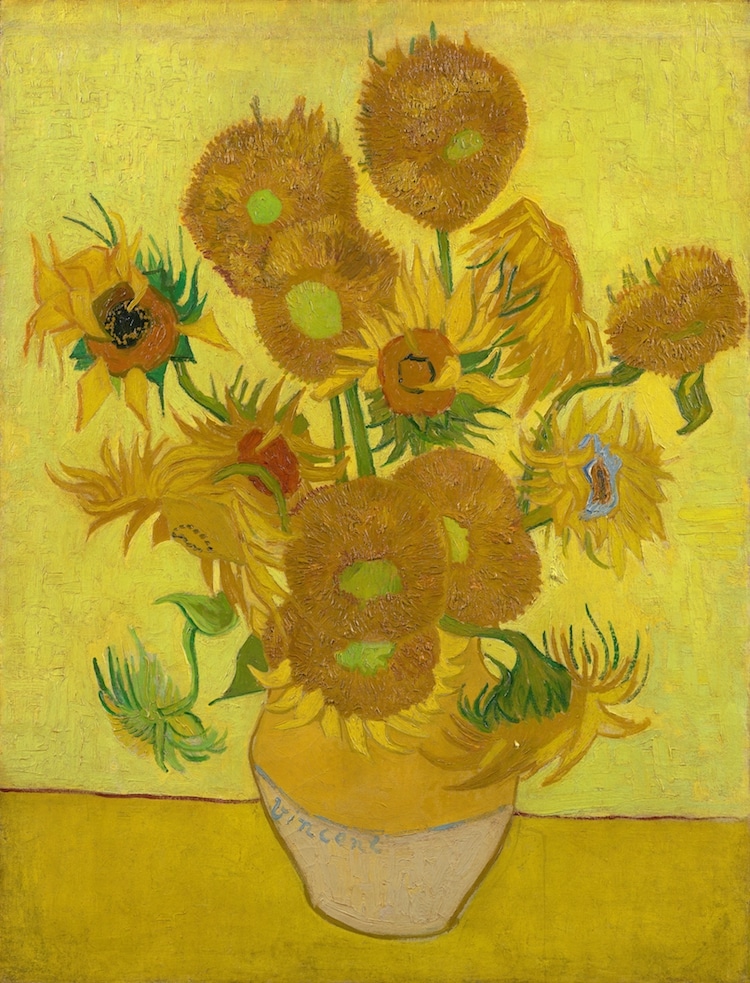
Vincent van Gogh, “Sunflowers,” 1889 (Photo: The National Gallery via Wikimedia Commons, Public domain)
The still life remained a popular feature in many modern art movements. While Impressionist artists like Pierre-Auguste Renoir dabbled in the genre, it made its major modern debut during the Post-Impressionist period, when Vincent van Gogh adopted flower vases as his subject and Cézanne painted a famous series of still lifes featuring apples, wine bottles, and water jugs resting on topsy-turvy tabletops.
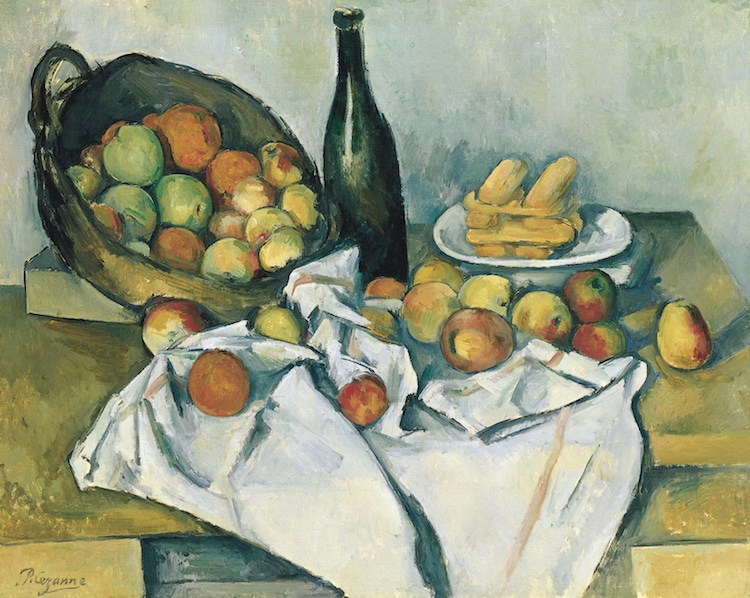
Paul Cézanne, The Basket of Apples’ (ca. 1895) (Photo via Wikimedia Commons Public Domain)
Some of Cézanne’s depictions even pay homage to the vanitas genre by incorporating skulls.

Paul Cézanne, “Still Life with Skull,” ca. 1895 – 1900 (Photo: Artwork Only via Wikimedia Commons, Public domain)
In addition to the Post-Impressionists, Cubist masters Pablo Picasso and Georges Braque and Pop Art pioneer Roy Lichtenstein also favored everyday objects, from bowls of fruit to technological inventions.
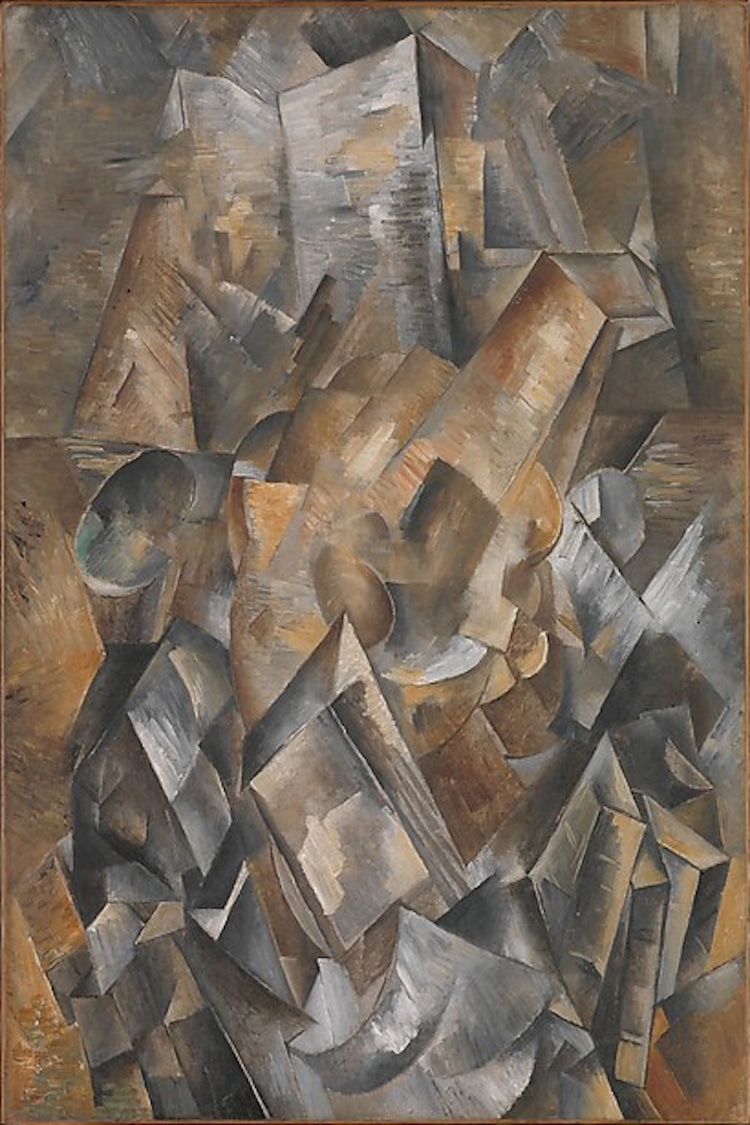
Georges Braque, “Still Life with Metronome,” 1909 (Photo: The Metropolitan Museum of Art via Wikimedia Commons, Public domain)
Contemporary Art
Today, many artists put a contemporary twist on the timeless tradition by painting still lifes of modern-day food and objects in a hyperrealistic style. Much like the pieces that inspire them, these high-definition paintings prove that even the most mundane objects can be made into masterpieces.
This article has been edited and updated.
Related Articles:
Celebrity Fad Diets Recreated as Classical Still Lifes
Sophisticated Flower and Food Arrangements Resemble the Fine Art Beauty of Still-Life Paintings
Colorful Still-Life Embroideries of Quaint Houseplants and Modern Interior Design
Artist Gives Old Paintbrushes New Life and Personality as Baroque Characters

